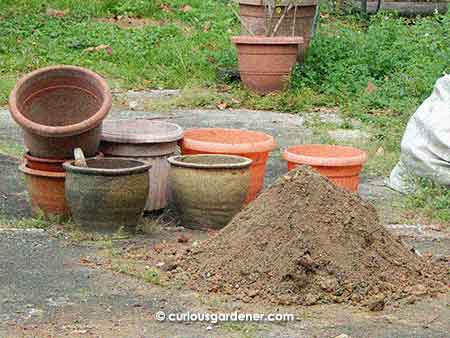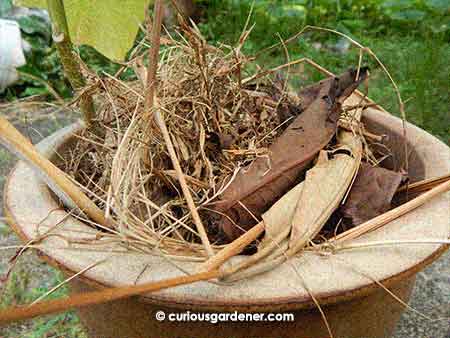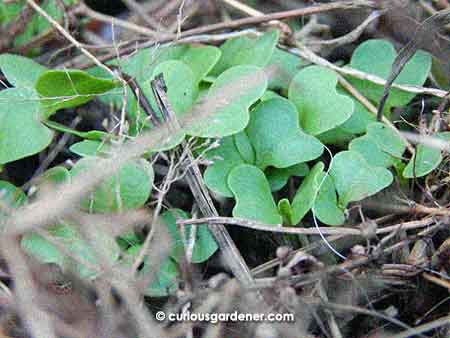In this case, I’m not talking about lessons learned from making mistakes (like I normally share). Last week, we hosted a friend who has a small farm in Thailand. While I needed an interpreter to translate, some things just spoke louder than words.
It’s all in the mindset
I guess when you manage a large area of land, you learn how to do things quickly and efficiently. While our garden is a little bigger by Singapore standards, it’s probably a drop in the pond to our guest. So while I think I’m such a gardening warrior on weekends, this nimble farmer friend simply went out to the garden and got lots done in the blink of an eye. I was so humbled. Patches of weeds were dispatched, unoccupied pots were emptied and refilled with new soil, and things got planted – all in a short period of time. If you have a lot to do in a limited amount of time, you learn to do everything quickly!
Mulching
I have a few composting stations in the garden, and normally wait for everything to break down before I use the compost. Our farmer friend grabbed the dried grass and leaves from the top layer and used that for mulching potted plants. She explained that in time, they would also break down into nutrients for the potted plants. I agree, but am apprehensive that there may be grass and weed seeds in that mulch that will soon germinate and make me have to weed more. Less weeding makes a happier me. ![]()
Security in numbers
Back to the topic of mindset, I usually sow seeds sparingly, but our friend approaches this differently. She sows two to four seeds in one spot (directly), and in the case of plants with small seeds (like leafy veggies), pretty much scatters handfuls of the fine seeds in growing pots. I was told that this is for germination purposes, and to transplant or thin out seedlings when they get their true leaves.
When we were discussing soil amendments, she looked around and didn’t share my concerns about the soil not being rich enough. After all, she said, the same plants can grow and be fruitful on rocky mountains, so don’t worry. The important thing is to get the plants growing, isn’t it?
I enjoyed the cross-cultural dialogue. It was the next best thing to going to the farm itself!
© 2014 curiousgardener.com All rights reserved.



